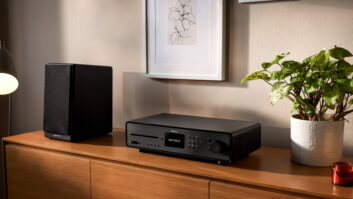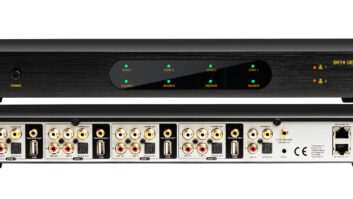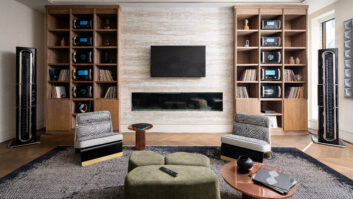In an ideal world, every audio system that you designed would be complemented by a room full of masterfully engineered sound absorption and diffusion panels, all placed and tuned to perfection by your on-staff acoustician. But in the real world, not every installation warrants exorbitant bass traps and wave ceilings, and not every budget can accommodate the expertise of an acoustics guru. In any room, though, and on any budget, there are a several best practices that you can implement to build a better environment for the sound systems you install.

Know Thy Speaker. “The first and most important thing is to understand how your speaker itself puts sound into the room,” said Peter Soderberg, western regional director for MartinLogan. Different speaker designs interact with the room differently and require different placement for optimal performance.
For any speaker type, though, Soderberg recommends employing the equations developed by George Cardas for speaker placement in a rectangular space. Even if those equations result in aesthetically challenged speaker placement, at least experiment with ideal placement before moving the speakers into more décorfriendly positions, so you better understand how placement affects performance.
Mirror, Mirror on the Wall. When it comes to dealing with the room itself, the most important thing to keep in mind, Soderberg said, is the Haas effect. “Longtime delays in reflected energy are perceived as pleasant ambience, whereas near-field delays are perceived as distortion,” he explained. So you want to deal with first and second reflections in the room, which you can find by having a helper slide a mirror down the sidewall while you sit in the main listening position. When you see the closest front speaker in the mirror, that’s your first reflection; when you see the further speaker, that’s your second reflection. And you can tame those with any number of commercially available acoustical treatments, but if the budget is tight, the old trick of using a bookshelf, drapery, or even houseplants will do in a pinch.
“Don’t take it too far, though,” Soderberg said. Per the Haas effect, the brain expects long time-domain reflected energy as a part of sound reproduction. Damp the room too much, and you’ll end up with an environment that’s dull and boring.
Correct Your Room Before Running Room Correction. DSPs and equalization help a lot, especially when dealing with low-frequency problems, but the more you employ room correction, Soderberg said, the more you’re taxing your processor, amplifier, speakers, and power supplies. So before EQing, chase down the most egregious problems in your room first. Seal your wall outlets, for example–each one is a hole in your room that allows valuable sound energy to leak into the walls, where it’s absorbed and re-radiated by the sheetrock. You should also dampen large, flat surfaces like furnace doors, which act as diaphragms that resonate and either reinforce or cancel certain frequencies in the room. The less work your room correction software has to do, the better.
Dennis Burger is a contributing writer to Residential Systems, based in Montgomery, AL.







